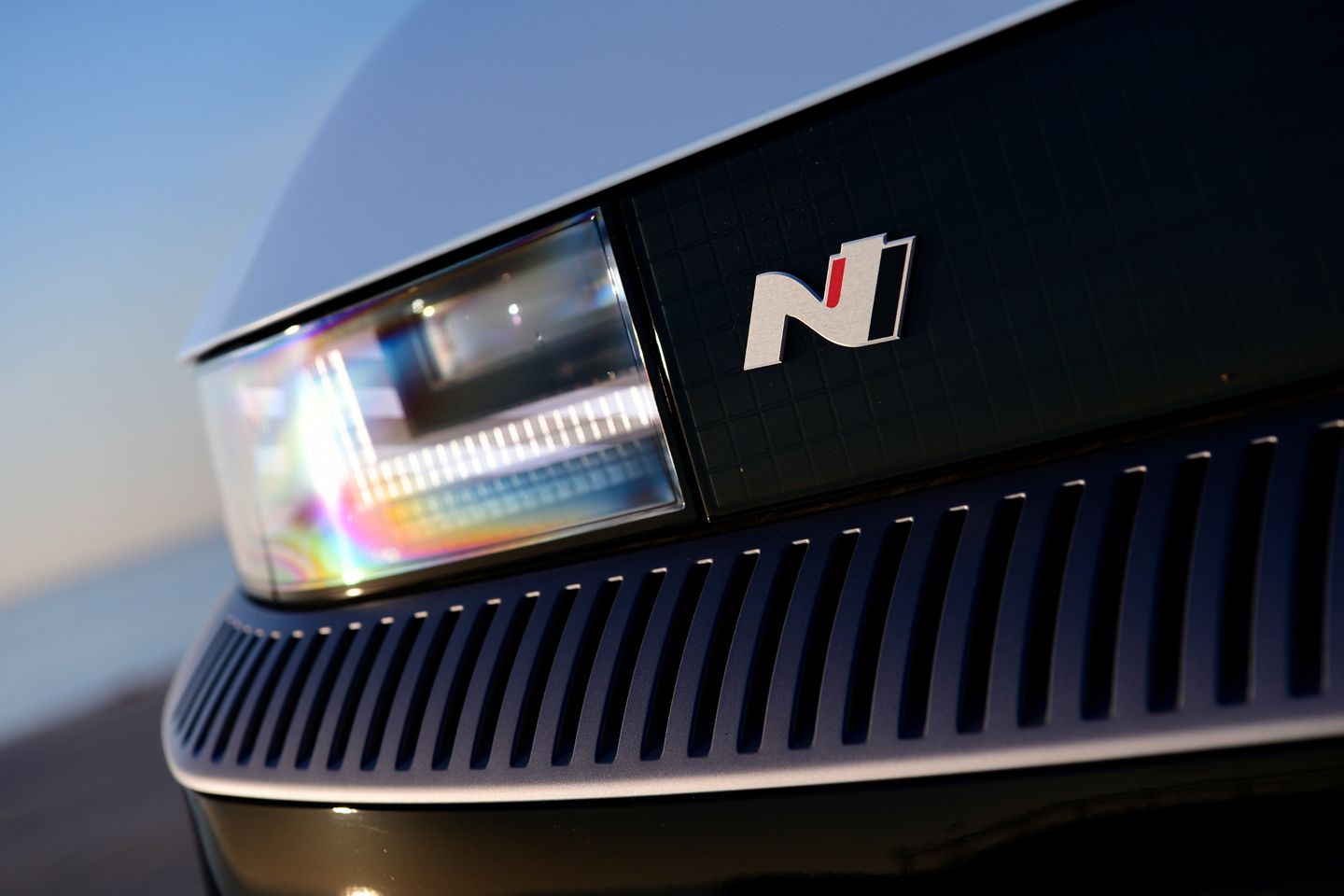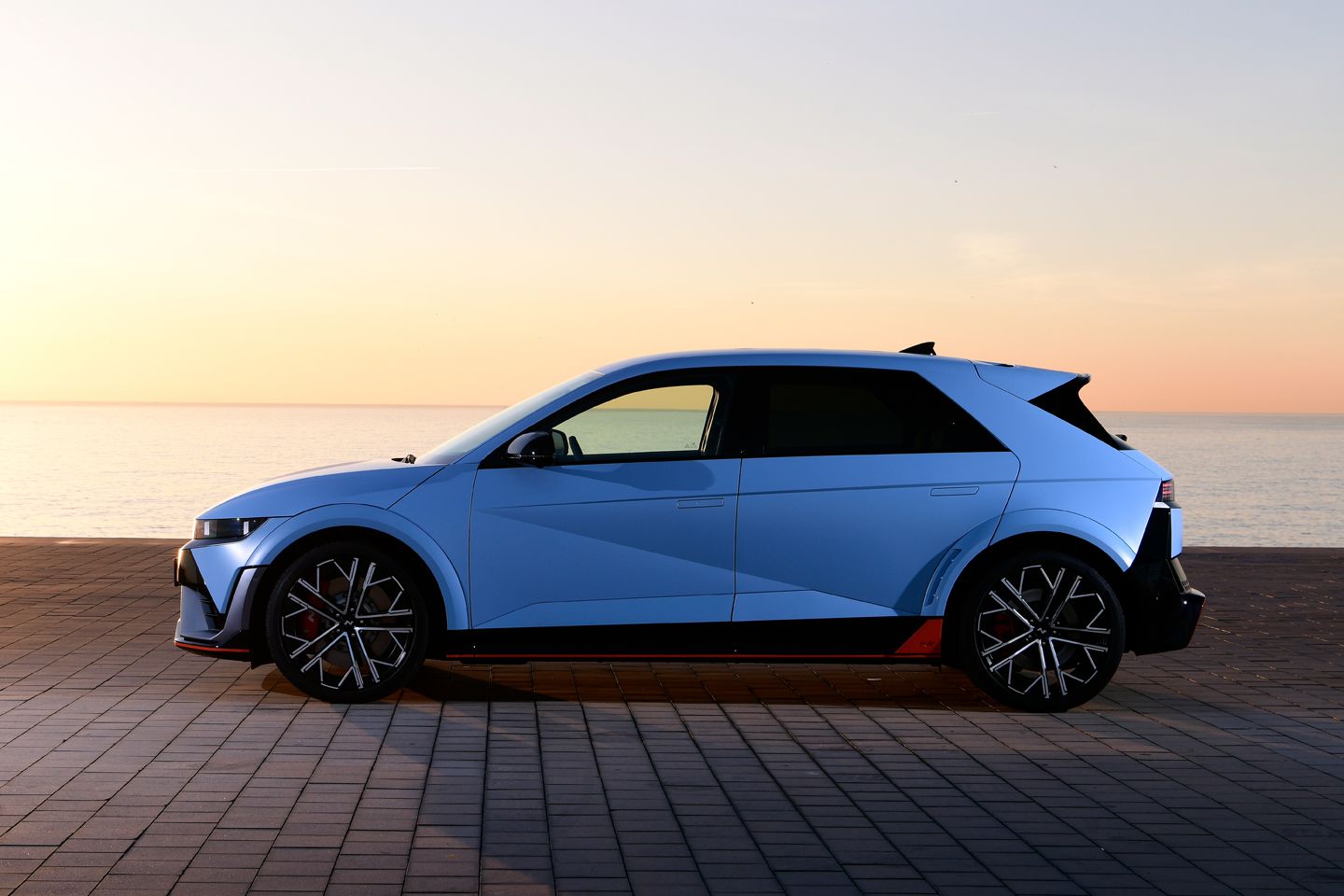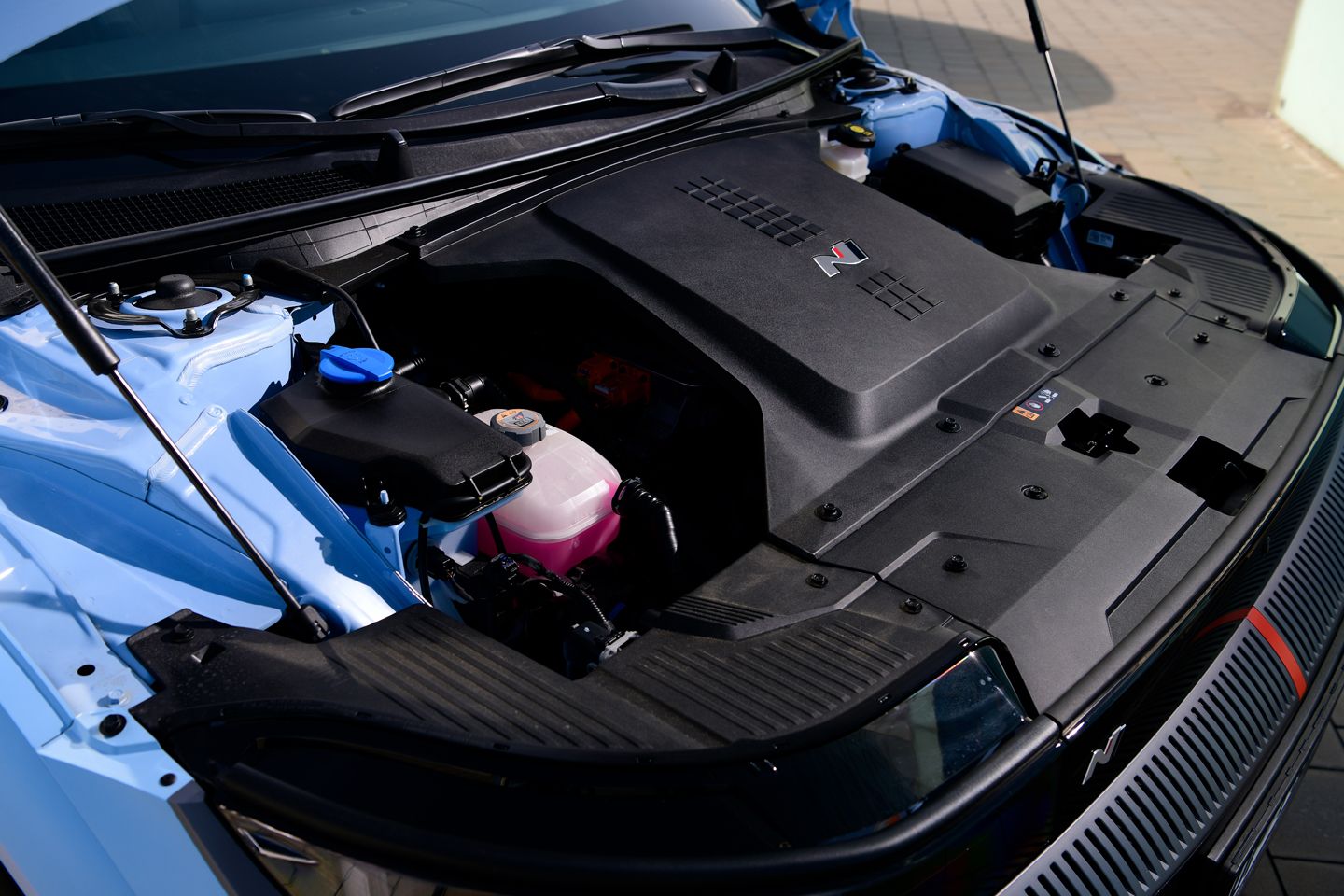2024 Hyundai Ioniq 5 N | PH Review
The Ioniq 5 gets the rear wiper it's always needed. And more than 600hp

Even when most weeks seem momentous for electric vehicles, the arrival of the production-spec Ioniq 5 N in Europe feels like a pretty big deal. For the segment, of course - because this might actually be a properly desirable electric hot hatch - but also for Hyundai N (which had thus far only made cars half this value and power) and for those of us who just like driving. If Hyundai’s tech overload for this car is a success, then it bodes well for the future of enthusiast-focused EVs; if it comes across as gimmicky or silly, then this car - and the future of stuff like it - is going to look an even tougher sell.
The bad news first then. Even those familiar with mode-mad Hyundai N products and the Ioniq 5 driving environment might find this pretty overwhelming to initially sit in. It’s familiar, but just more of everything, everywhere. There’s a drive mode button and an N mode, but now a second N dial for the artificial gears plus an NGB red lozenge (N Grin Boost, for the full 650hp) on the wheel.
Delve into the setup screen and you’ll discover the usual parameter adjustment (ESC, steering weight, suspension, throttle response, diff) plus all the N-specific stuff as well: the N e-Shift that mimics an eight-speed DCT, the N Active Sound + that has three settings, the launch control, the drift optimizer, the N Torque Distribution, the N Pedal… it’s a lot. An awful lot. This is all before turning off the maddening steering assist and speed limit warning. It really is worth getting familiar with the 5 N before setting off. And having a co-driver to adjust settings, truth be told. So don’t expect a definitive verdict on every permutation just yet…


Beginning in Sport to avoid some kind of mode anxiety meltdown, the Ioniq shows considerable promise. By the first roundabout it’s clear this isn’t just a 5 with a heap more power and some smart wheels; it feels taut, precise, eager and with a proper sense of connection through the controls that eludes the standard car. The brake pedal is firm (and very impressive for a by-wire), the steering has gained some welcome weight and the suspension initially feels borderline miraculous for a car that weighs two-and-a-quarter tonnes. There’s compliance where required in a softer mode, and very smartly judged focus when cranked up. The occasional ridge in the road might expose the N slightly with a bit of unchecked float, though surely nobody would question an assertion that this was 500kg lighter. There’s real depth and purpose to the chassis upgrades, like it’s been thoroughly reworked to engage rather than merely tweaked to handle more power.
The additional N features really bring the car to life - the N e-Shift is honestly more convincing and characterful than some combustion-engined dual-clutches. The paddles are satisfying enough, the ‘ignition cut’ on upshift really cleverly done (as well as loud!) and the downshifts judged perfectly to aid braking. Moreover, it all seems natural and intuitive, right down to bap-bap-bapping off a limiter between hairpins. It’s not ‘real’, but it is fun - and that feels more important.
It also adds another dimension to the driving experience that doesn’t require maximum commitment (or loads of space and denial) to really appreciate. It becomes habit to press that second N dial and play with the paddles as you would in an automatic car, the 5 N even quite convincingly building power up to an 8,000rpm redline (so much so, in fact, that it feels a lot faster without the gears engaged). The sounds are still a bit too fake for proper aural excitement, but Ignition - which sounds like an i30 N through a megaphone - isn’t without its appeal.


With a more powerful motor at the rear than the front, there’s not a special mode required (thank goodness) for the Ioniq to seem rear-biased on the road. Not overtly or synthetically so, just as the best all-wheel drive performance cars do. The front end won’t give up, either. The fact you’re genuinely engrossed in how the car drives is encouraging - this must be the longest we’ve got into an EV drive without talking about straight-line speed.
Predictably, it’s faster than needed, though (perhaps inevitably given 2,235kg) never quite blows your head off like 600hp+ would elsewhere. The N Grin Boost certainly does as advertised, though only for 10 seconds. The Ioniq can feel really chunky on smaller roads, too, which dampens enthusiasm and a need for speed. Apparently this car had to be more powerful than the 585hp Kia EV6 GT, if you’re wondering why a large family hatch has twice the power of standard. The fact the 5 never feels overawed says a lot of what’s been achieved with the chassis, even if it never fully stops feeling a tad OTT.
Speaking of the Kia, Hyundai reckons that the key difference between the two is the Ioniq’s suitability for circuit driving. It’s been designed very much with track use in mind, with better cooling and thermal management as well as the chassis hardware, plus the option to prime the battery for charging straight from flat-out use. It can complete a flat-out lap of the Nordschleife with no drop-off in power, which the development team reckons wasn’t originally possible in a Porsche Taycan.


As for the actual circuit driving, it’s perhaps the Ioniq 5 N’s strongest attribute. Yep, the 2.2-tonne EV shows its best on track - we were surprised, too. Probably it’ll wilt like anything given enough time and effort, but the stamina in warm conditions from every component was laudable; there have definitely been other cars driven at Parcmotor Castelloli that haven’t shown such resilience.
As road use intimated, the front end is tenacious and direct (as might be expected with 275-section tyres at every corner) and there must be all manner of witchcraft going on behind the scenes - so the key takeaway is that it doesn’t seem totally contrived. It can be driven quickly, accurately and neatly, or a little more flamboyantly holding the brake to an apex, or full slow-in, silly-out hero, always on your side and always willing to go again. It’s adjustable on and off the throttle, being as subtle or as showboaty as required - the Ioniq is anything but the blunt-yet-bonkers-fast performance EV.
Okay, perhaps the brake would benefit from some proper feel and there’s finally a sense of that kerbweight during really quick direction changes, yet the N remains properly gratifying to drive almost as fast as you dare. And without a power loss warning or error message in sight; it just keeps on giving. Best hope the local circuit has a fast charger. (For what it’s worth Hyundai says the battery can handle 20 mins flat out then 20 mins rapid charged then the same again, over and over.)


There’s also a brief chance to try the Drift Mode, which is far more complicated (hopefully a theme here is becoming clear) than just dumping all the power on the back axle. The steering has a bespoke tune to make opposite lock easier, power can go forwards if it helps maintain a slide and the ESC can bite a brake to the same end. It’ll oversteer for sure, though without any revs (no gearshifts now) and without being dropped down in the centre of the action - those are your drifter’s excuses - the Ioniq does take some getting used to. The Optimiser isn’t a miracle worker. But it’s a good giggle, and again something else to learn and appreciate over time with a 5 N.
With so much to wrap your head around and only a day to do so, it’s hard to be absolutely conclusive on the Ioniq 5 N. Perhaps the novelty of ‘gearshifts’ and ‘engine sound’ would wear off; there’s the turn-in-enhancing N Pedal and N Torque Distribution to try out as well. Plus the more prosaic considerations like range (278 miles isn’t loads, while an 84kWh battery isn’t massive given how much it weighs) and efficiency (good luck with close to 3mi/kWh enjoying the car anywhere near its full). It’s sort of sad, too, that we live in a world where 650hp and 2.2 tonnes is just the going rate for a performance EV; this technology and this sense of fun in, say, a 480hp, 1,750kg car could be genuinely extraordinary.
As it is, the N still feels like a high watermark moment for Hyundai and for EVs more generally - it is (finally) a battery-powered car that you’re desperate to drive again, both for its obvious abilities and for those that might be discovered over time. Perhaps for now it is sufficient to state the obvious: it keeps all that was so good about the standard Ioniq 5 (it’s still brilliantly refined and practical) while injecting a whole heap of driver appeal and engineering intrigue. But the fact that much more powerful and expensive EVs don’t seem as enjoyable to get behind the wheel of is the standout achievement. More miles can’t come soon enough.
SPECIFICATION | 2024 HYUNDAI IONIQ 5 N
Engine: 84kWh lithium-ion battery
Transmission: 2 permanent magnet synchronous motors, all-wheel drive
Power (hp): 609 (650 with overboost)
Torque (lb ft): 567 (overboost)
0-62mph: 3.5 secs (3.4 overboost)
Top speed: 162mph
Weight: 2,235kg
MPG: 278 miles ‘maximum potential EV driving range’, efficiency 2.93mi/kWh
CO2: 0g/km (driving)
Price: £65,000



1. The wheels are crap. You need to see the wheel rim to delineate wheel from tyre. This is lacking.
2. Paint the front of the car the same colour as the rest. All this black is a mess.
3. The interior looks cheap because it’s black. Only expensive cars tend to have non - black interiors, so no thanks to the Astra-like cabin; I’ll go red leather.
Good luck to Hyundai. The styling is terrific.
Gassing Station | General Gassing | Top of Page | What's New | My Stuff



